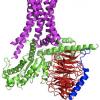Not sure if this has been mentioned already -- I did a search but could not find it in the forums here -- but here's a recent paper on many mitochondrial targeted modalities. It discusses many of the current topics here, eg MitoQ, SkQ, peptides, nanoparticles, etc. -- Trance
Abstract:
Populations in many nations today are rapidly ageing. This unprecedented demographic change represents one of the main challenges of our time. A defining property of the ageing process is a marked increase in the risk of mortality and morbidity with age. The incidence of cancer, cardiovascular and neurodegenerative diseases increases non-linearly, sometimes exponentially with age. One of the most important tasks in biogerontology is to develop interventions leading to an increase in healthy lifespan (health span), and a better understanding of basic mechanisms underlying the ageing process itself may lead to interventions able to delay or prevent many or even all age-dependent conditions.
One of the putative basic mechanisms of ageing is age-dependent mitochondrial deterioration, closely associated with damage mediated by reactive oxygen species (ROS). Given the central role that mitochondria and mitochondrial dysfunction play not only in ageing but also in apoptosis, cancer, neurodegeneration and other age-related diseases there is great interest in approaches to protect mitochondria from ROS-mediated damage. In this review, we explore strategies of targeting mitochondria to reduce mitochondrial oxidative damage with the aim of preventing or delaying age-dependent decline in mitochondrial function and some of the resulting pathologies. We discuss mitochondria-targeted and -localized antioxidants (e.g.: MitoQ, SkQ, ergothioneine), mitochondrial metabolic modulators (e.g. dichloroacetic acid), and uncouplers (e.g.: uncoupling proteins, dinitrophenol) as well as some alternative future approaches for targeting compounds to the mitochondria, including advances from nanotechnology.
Full Paper:
 Mitochondria-Targets.pdf 1.39MB
25 downloads
Mitochondria-Targets.pdf 1.39MB
25 downloadsPubMed:
http://www.ncbi.nlm....pubmed/23022622
 Image1.jpg 104.83KB
10 downloads
Image1.jpg 104.83KB
10 downloadsDesign of a possible mitochondria-targeted nano-material, bearing several functional groups (e.g. mitochondriotropics and fluorescent probes) and encapsulating antioxidants in their inner core.


















































